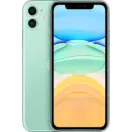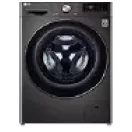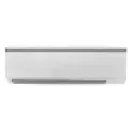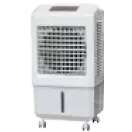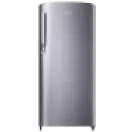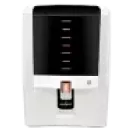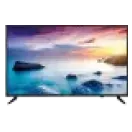When comparing the MediaTek Dimensity 1050 vs MediaTek Dimensity 8200, it is evident that both processors offer unique strengths tailored to different user needs. The Dimensity 1050, positioned as a mid-range chipset, is designed for mainstream users who require a reliable and efficient SoC for daily tasks and moderate gaming. It features a balanced octa-core architecture with decent processing speeds and a Mali-G610 MC3 GPU, making it a solid choice for those seeking a budget-friendly device with 5G capabilities. On the other hand, the MediaTek Dimensity 8200 is a more powerful upper mid-range chipset, boasting a more advanced architecture, higher clock speeds, and a superior Mali-G610 MC6 GPU. This makes it ideal for users who demand higher performance, particularly in gaming and multitasking scenarios, where its faster memory support and improved connectivity features shine.
For gaming enthusiasts, the Dimensity 8200 offers a distinct advantage, delivering better graphics performance and higher benchmark scores, making it a key component in some of the
best gaming mobile phones available today. The chipset’s capabilities extend beyond just gaming, making it a versatile choice for those who use their smartphones for a wide range of activities. Meanwhile, the Dimensity 1050 continues to be a strong contender in the mid-range segment, providing a solid balance between performance and cost. For those exploring devices powered by these chipsets, checking out a range of
MediaTek processor phones can help identify the right fit based on your performance needs and budget.
Technical specifications - MediaTek Dimensity 1050 vs MediaTek Dimensity 8200
General info
When comparing the MediaTek Dimensity 1050 and Dimensity 8200, it is important to understand their basic identities. Both are powerful processors designed for different tiers of the smartphone market. While the Dimensity 1050 is positioned as a mid-range SoC with 5G capabilities, the Dimensity 8200 targets the upper-midrange segment with more advanced features and higher performance.
| Feature | MediaTek Dimensity 1050 | MediaTek Dimensity 8200 |
| Announced | 23 May 2022 | 08 December 2022 |
| Class | Mid-range | Upper mid-range |
| Model number | MT6879 | MT6896 |
| Brand | MediaTek | MediaTek |
CPU
The CPU configuration of these SoCs is critical in determining their processing power. The Dimensity 1050 features a balanced octa-core set up suitable for everyday tasks, while the Dimensity 8200 offers a more advanced architecture, delivering higher clock speeds and better efficiency, making it ideal for more demanding applications and gaming.
| Feature | MediaTek Dimensity 1050 | MediaTek Dimensity 8200 |
| Architecture | 64-bit ARMv8-A | 64-bit ARMv9-A |
| Cores | 8 (2x Cortex-A78, 6x Cortex-A55) | 8 (1x Cortex-A78, 3x Cortex-A78, 4x Cortex-A55) |
| Frequency | Up to 2.5 GHz | Up to 3.1 GHz |
| Instruction set | ARMv8.2-A | ARMv9-A |
| Process | 6 nm | 4 nm |
| Manufacturing | TSMC | TSMC |
Graphics
Graphics processing is crucial for rendering visuals and running games smoothly. The Dimensity 1050 is equipped with a capable GPU suitable for mid-range gaming, while the Dimensity 8200’s GPU provides more power, supporting higher frame rates and better visual effects, making it more adept for heavy gaming and multimedia tasks.
| Feature | MediaTek Dimensity 1050 | MediaTek Dimensity 8200 |
| SoC | MediaTek | MediaTek |
| GPU name | Mali-G610 MC3 | Mali-G610 MC6 |
| Architecture | Valhall | Valhall |
| GPU frequency | Up to 850 MHz | Up to 950 MHz |
| Execution units | 3 | 6 |
| Shading units | No | No |
| Total shaders | No | No |
| FLOPS | No | No |
| Vulkan version | 1.1 | 1.2 |
| OpenCL version | 2.0 | 3.0 |
| DirectX version | 12 | 12 |
Memory
Memory capabilities define how well the SoC can handle multitasking and large applications. The Dimensity 1050 supports mid-range memory speeds and capacities, while the Dimensity 8200 supports faster memory speeds and higher capacities, making it more suitable for high-performance tasks.
| Feature | MediaTek Dimensity 1050 | MediaTek Dimensity 8200 |
| Memory type | LPDDR4X, LPDDR5 | LPDDR5 |
| Memory frequency | 3200 MHz | 4266 MHz |
| Bus | 64-bit | 64-bit |
| Max bandwidth | 25.6 GB/s | 34.1 GB/s |
| Max size | 12GB | 16GB |
Multimedia (ISP)
Multimedia processing in these SoCs determines their ability to handle cameras, video playback, and codecs. The Dimensity 1050 provides solid multimedia support for mid-range devices, while the Dimensity 8200 excels with higher camera resolutions, better video capture capabilities, and broader codec support, making it ideal for multimedia enthusiasts.
| Feature | MediaTek Dimensity 1050 | MediaTek Dimensity 8200 |
| Storage type | UFS 2.2, UFS 3.1 | UFS 3.1 |
| Max display resolution | Full HD+ (2520 x 1080) | WQHD+ (3200 x 1440) |
| Max camera resolution | 108 MP | 200 MP |
| Video capture | 4K at 30 FPS | 4K at 60 FPS |
| Video playback | 4K at 30 FPS | 4K at 60 FPS |
| Video codecs | H.264, H.265/HEVC | H.264, H.265/HEVC, AV1 |
| Audio codecs | AAC, LDAC, aptX HD | AAC, LDAC, aptX HD, aptX adaptive |
Connectivity and network
Connectivity features define the network compatibility and speed capabilities. The Dimensity 1050 offers solid 5G support for mainstream users, while the Dimensity 8200 brings faster connectivity speeds, more advanced Wi-Fi, and broader network compatibility, catering to users requiring top-tier connectivity performance.
| Feature | MediaTek Dimensity 1050 | MediaTek Dimensity 8200 |
| Modern | 5G NR Sub-6GHz | 5G NR Sub-6GHz, mmWave |
| 4G support | Yes | Yes |
| 5G support | Yes | Yes |
| Download speed | Up to 4.7 Gbps | Up to 7.9 Gbps |
| Upload speed | Up to 2.3 Gbps | Up to 3.5 Gbps |
| Wi-Fi | Wi-Fi 6 | Wi-Fi 6E |
| Bluetooth | 5.2 | 5.3 |
| Navigation | GPS, GLONASS, BeiDou | GPS, GLONASS, BeiDou, Galileo |
MediaTek Dimensity 1050 vs MediaTek Dimensity 8200 - Benchmarking
Benchmark scores are essential for understanding real-world performance. The Dimensity 8200 generally scores higher in benchmarks due to its superior architecture and GPU, making it more powerful in intensive tasks like gaming, while the Dimensity 1050 performs adequately for general use and mid-range tasks.
AnTuTu 10
AnTuTu benchmarks are a comprehensive performance metric, encompassing CPU, GPU, memory, and user experience. The Dimensity 8200 shows significantly higher scores across all categories, making it a better performer overall, especially in GPU-intensive tasks, while the Dimensity 1050 delivers good performance for its class.
| Feature | MediaTek Dimensity 1050 | MediaTek Dimensity 8200 |
| CPU | 170,000 | 210,000 |
| GPU | 140,000 | 290,000 |
| Memory | 90,000 | 120,000 |
| UX | 100,000 | 160,000 |
| Total score | 500,000 | 780,000 |
GeekBench 6
GeekBench 6 provides insight into the SoCs' capabilities in specific tasks like image processing, asset compression, and ray tracing. The Dimensity 8200 outperforms the Dimensity 1050 across these metrics, thanks to its newer architecture and faster processing cores, making it a better option for demanding applications.
| Feature | MediaTek Dimensity 1050 | MediaTek Dimensity 8200 |
| Asset compression | 1200 | 1800 |
| HTML 5 browse | 2200 | 3200 |
| PDF render | 1600 | 2400 |
| Image detection | 1400 | 2100 |
| HDR | 1500 | 2300 |
| Background blur | 1300 | 2000 |
| Photo processing | 1200 | 1800 |
| Ray tracing | No | Yes |
3DMark
3DMark scores focus on the graphical performance of the SoC, including stability and rendering tests. The Dimensity 8200, with its higher GPU capabilities, scores significantly better in these tests, making it the preferred choice for gaming and graphic-intensive applications, while the Dimensity 1050 is suitable for less demanding tasks.
| Feature | MediaTek Dimensity 1050 | MediaTek Dimensity 8200 |
| Stability | 97% | 99% |
| Graphics test | 2800 | 4900 |
| Score | 3000 | 5000 |
Explore MediaTek mobiles on the lowest EMI from Bajaj Finserv
Bajaj Mall is the best online destination for you to read about all the details, features, and specs of MediaTek mobiles. Once you have gathered all the information you want, head to the nearest Bajaj Finserv partner store and select the MediaTek mobile you want. Use the Bajaj Finserv Insta EMI Card which comes with a pre-approved card limit of up to Rs. 3 lakh to make the payment. You can choose a convenient repayment tenure of your choice and repay your purchase in interest-free EMIs.
Advantages of shopping using the Bajaj Finserv Insta EMI Card
Competitive prices: Bajaj Finserv offers competitive pricing, ensuring that your purchase is budget-friendly.
No Cost EMIs: With the
Bajaj Finserv Insta EMI Card, buying your desired product becomes hassle-free. Choose a preferred tenure between 3 months to 60 months and repay in interest-free EMIs.
Zero down payment: Forget about the hassles of an initial lump sum payment as select products are covered under the zero down payment policy.
Options and accessibility: Buying your favourite products have never been this easy! The Bajaj Finserv EMI Network hosts over 1 million products, available at 1.5 lakh+ partner stores, across 4,000+ cities.
Exciting deals and cashback offers: By using the Bajaj Finserv Insta EMI Card to purchase your desired product, you gain access to exciting deals and cashback offers.
Free home delivery: To add to your convenience, select products are delivered free of cost.
Mobile by brandsMobile by budget5G mobiles by brand 5G mobiles by budget